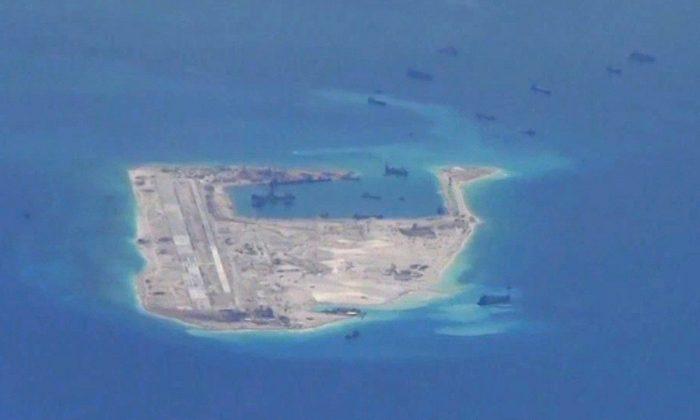TOKYO—U.S. Navy ships conducted joint drills with warships from allies Japan, Australia and South Korea in their first combined exercise in the Western Pacific, the U.S. Navy said on May 23.
The Pacific Vanguard exercise near the U.S. island of Guam takes place ahead of President Donald Trump’s visit to Japan this weekend, as Washington looks to allies in Asia to help counter China’s military might in the region.
“Pacific Vanguard joins forces from four, like-minded maritime nations that provide security throughout the Indo-Pacific based on shared values and common interests,” Vice Admiral Phillip Sawyer, commander of the U.S. Navy’s Seventh Fleet, said in a statement.
The six-day exercise involves two Japanese destroyers, two Australian frigates and a destroyer from South Korea, with as many as 3,000 sailors participating.
The U.S. Navy has deployed five ships as well as fighter jets and maritime patrol planes for the drills, which include live fire and anti-submarine warfare exercises.
Pacific Vanguard is the latest show of combined naval force in the Asia Pacific region.
This month, U.S. ships conducted drills with French, Japanese and Australian ships in the Bay of Bengal, and held separate exercises with a Japanese helicopter carrier and warships from India and the Philippines in the disputed South China Sea.
The Chinese Communist Party (CCP) immediately rejected the tribunal’s decision. A statement from its Foreign Ministry said it viewed the decision as “null and void and has no binding force.” It would “neither accept nor participate in the arbitration unilaterally initiated by the Philippines.” The true impact is uncertain given the tribunal has no power of enforcement, The Associated Press reported on July 12, 2016.
Brunei, Indonesia, Malaysia, the Philippines, Taiwan and Vietnam have competing claims to the waterway, through which passes about a third of global seaborne trade.
Taiwan is one of a growing number of flashpoints in the U.S.-China relationship, which also include a bitter trade war, U.S. sanctions and China’s increasingly muscular military posture in the South China Sea, where the United States also conducts freedom-of-navigation patrols.





